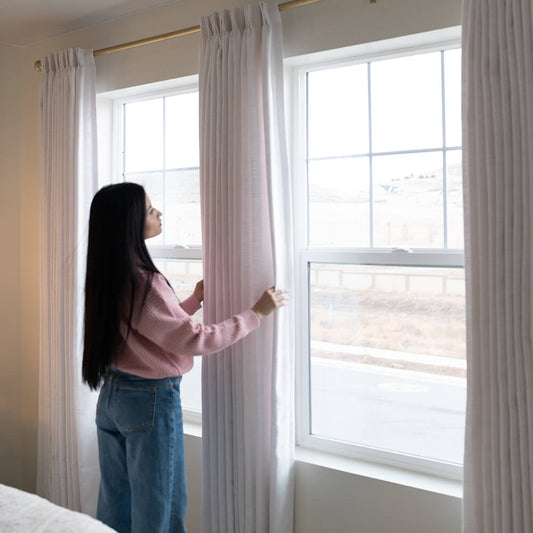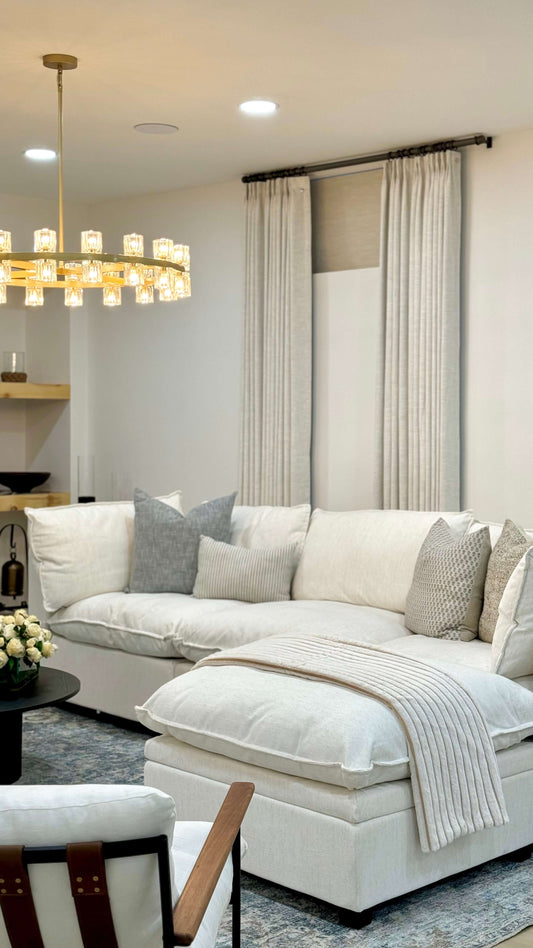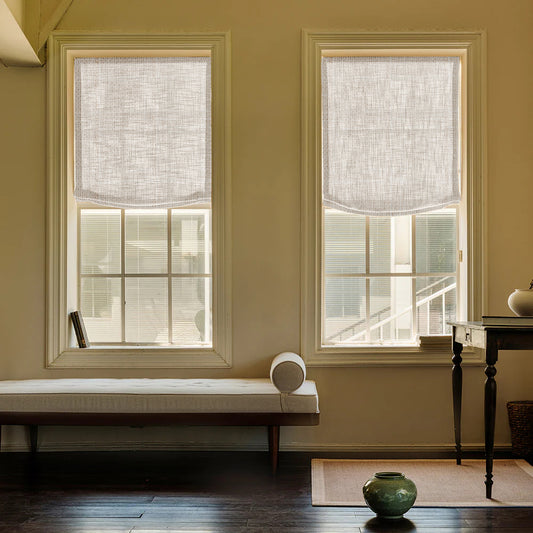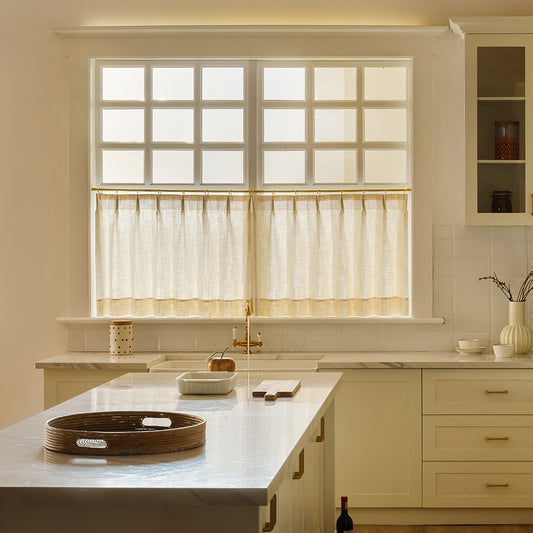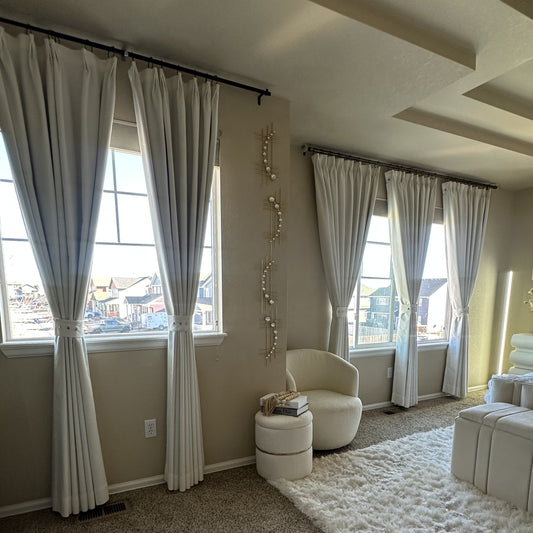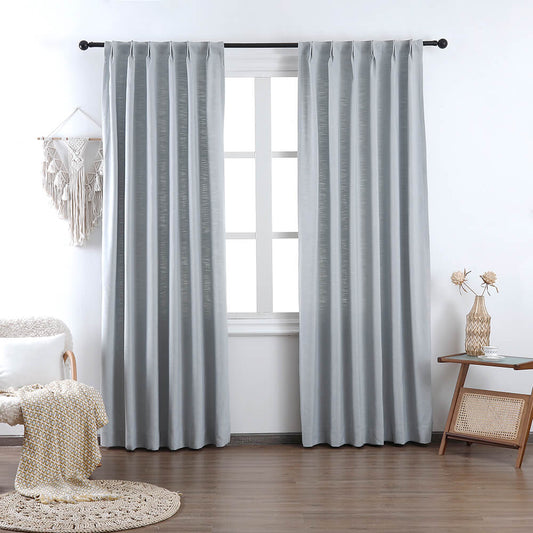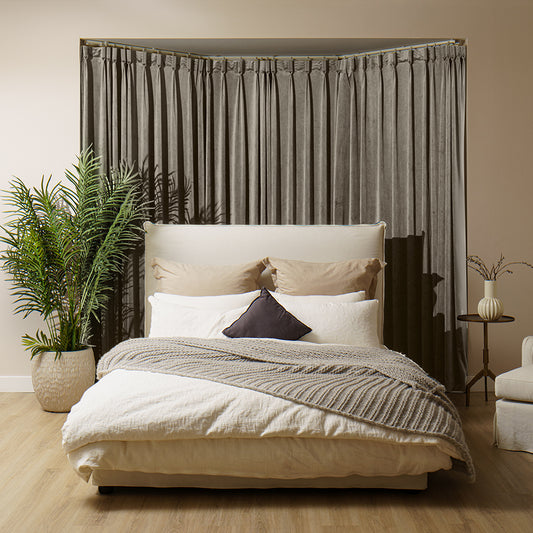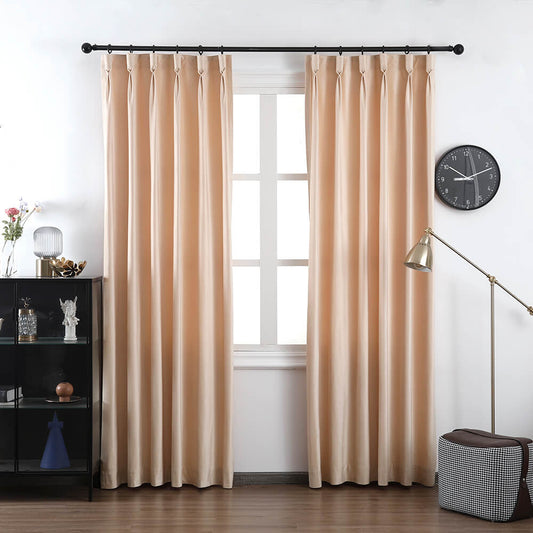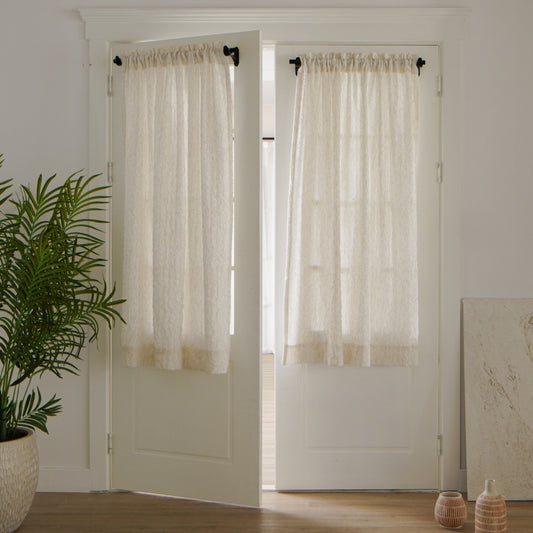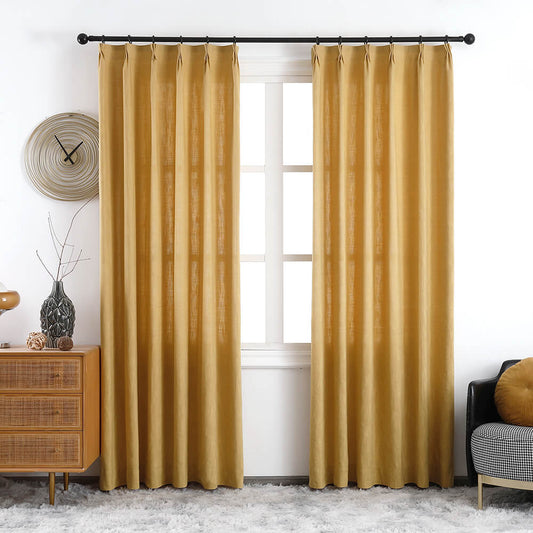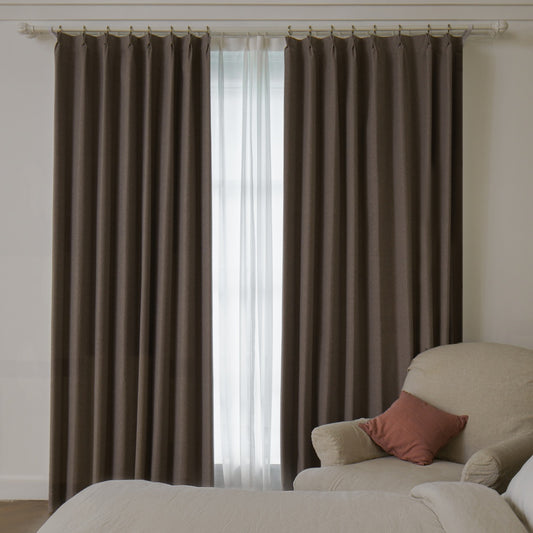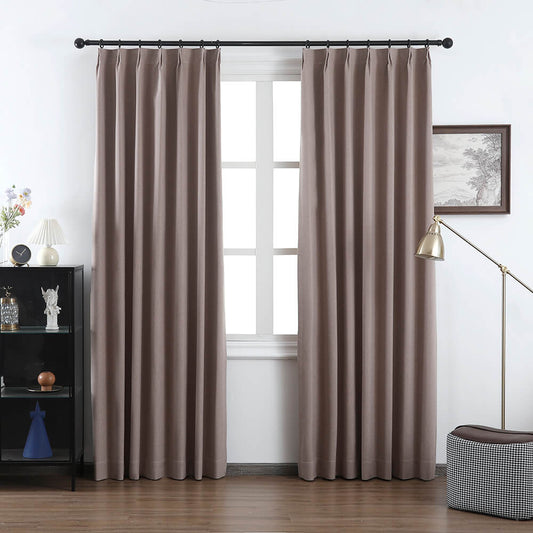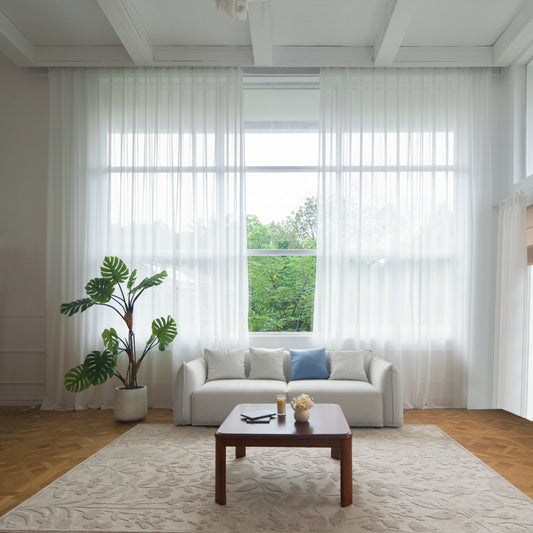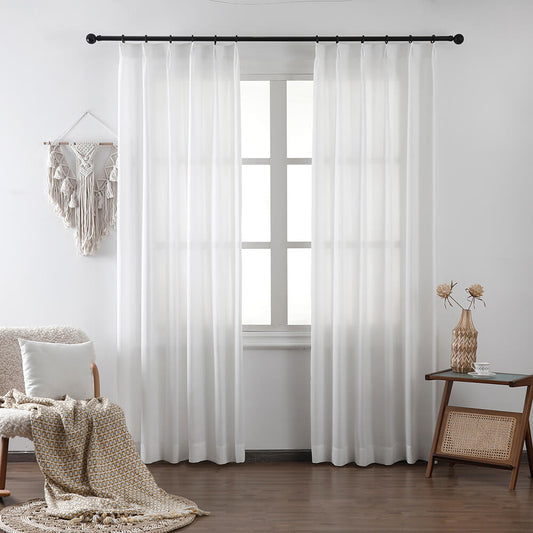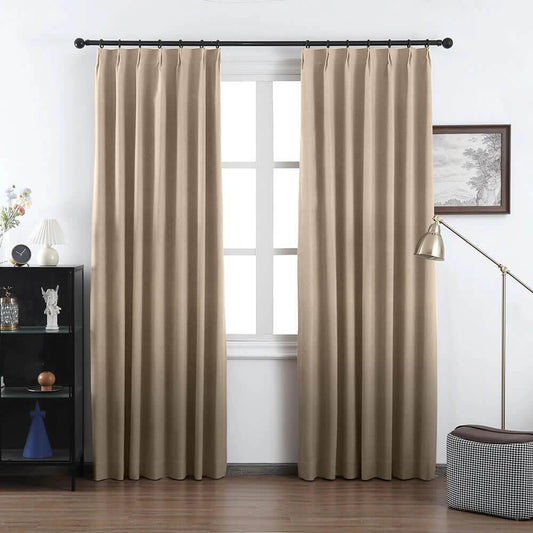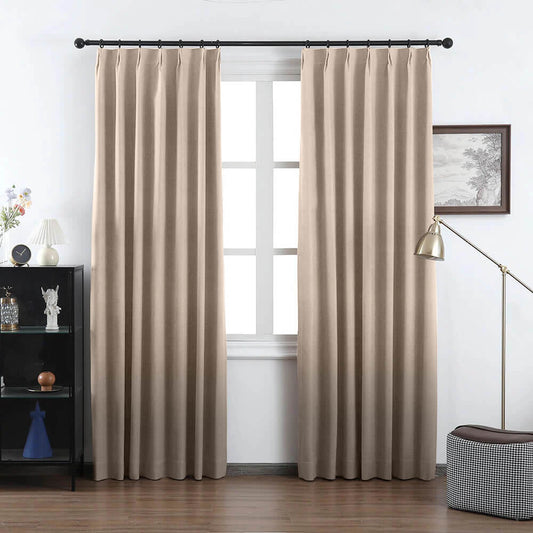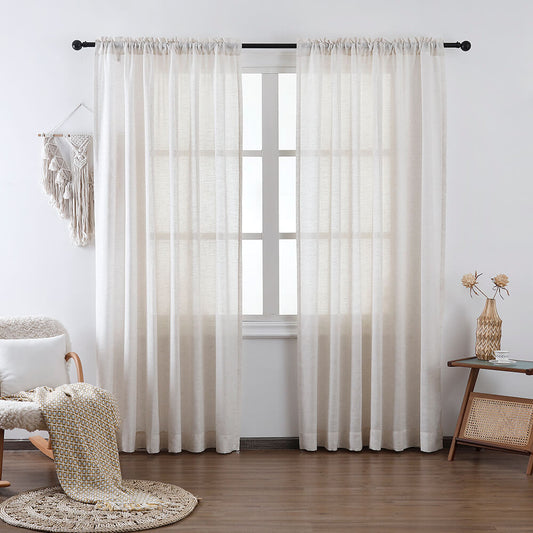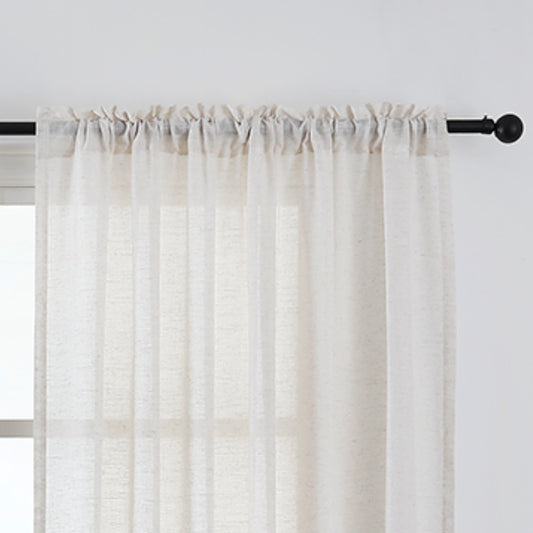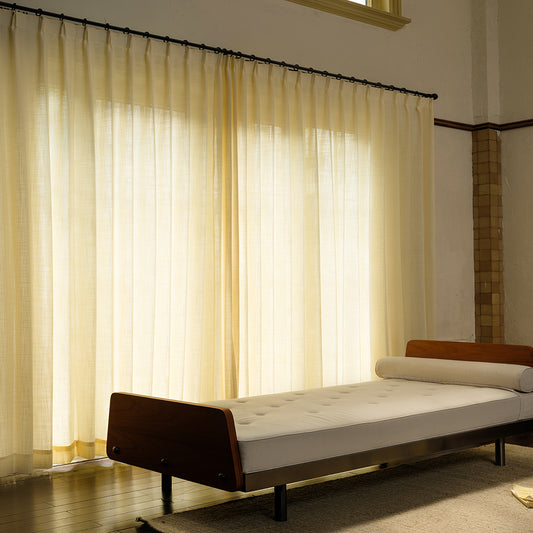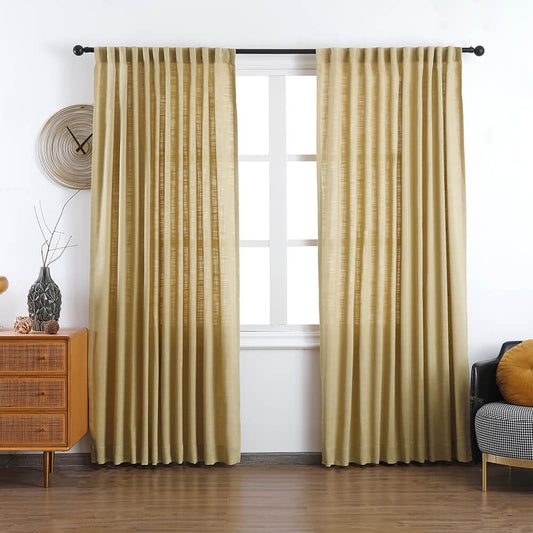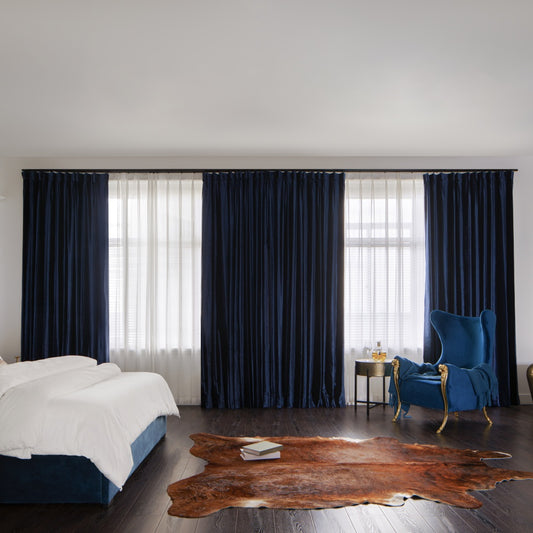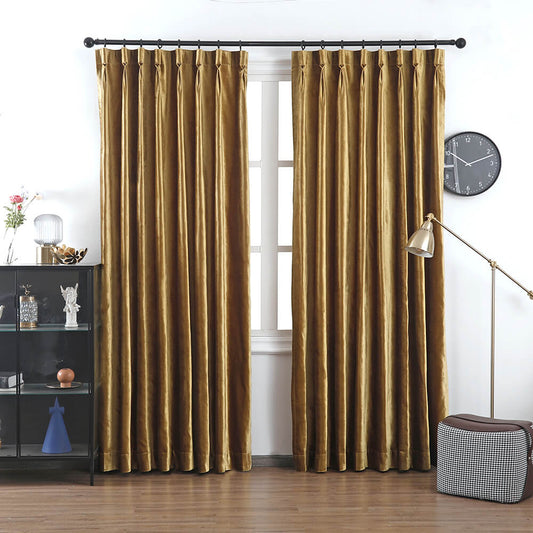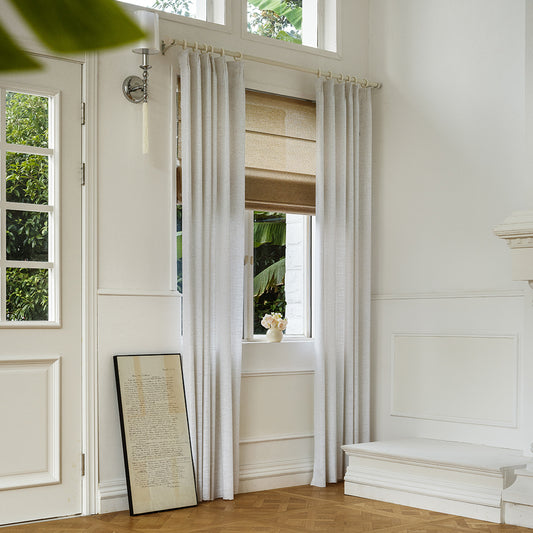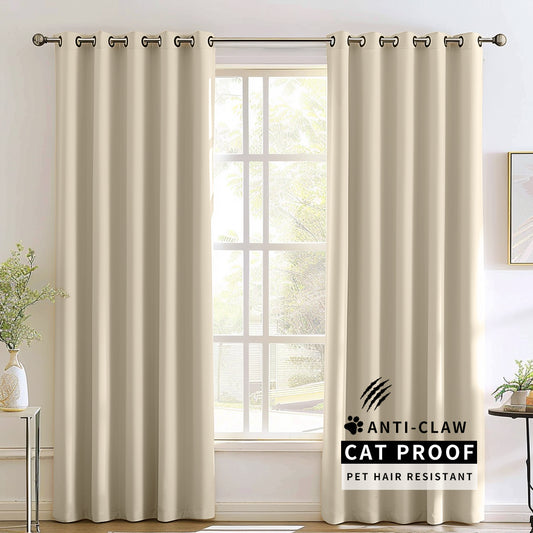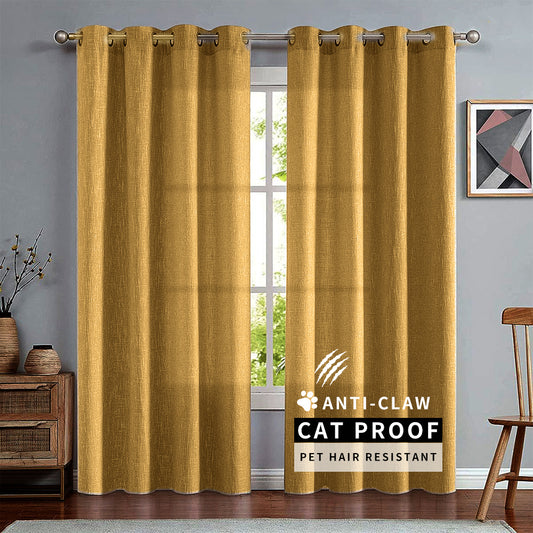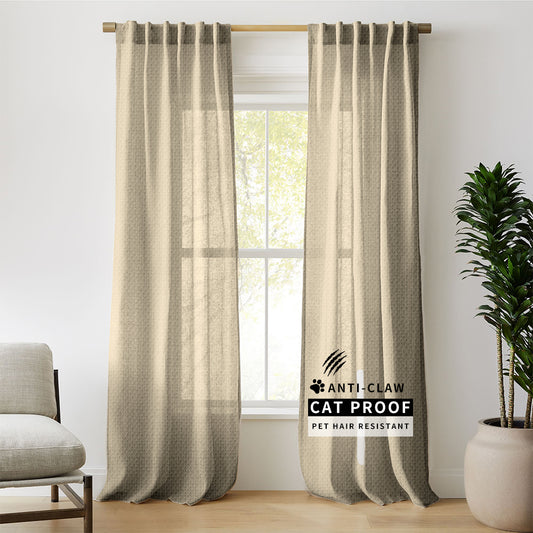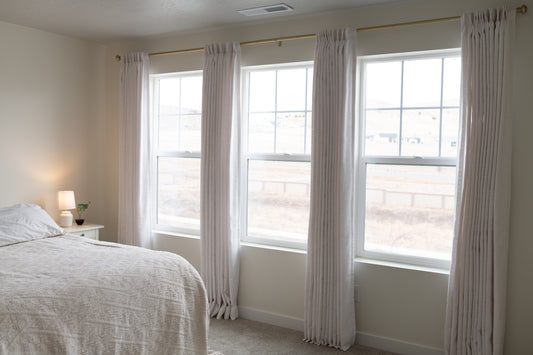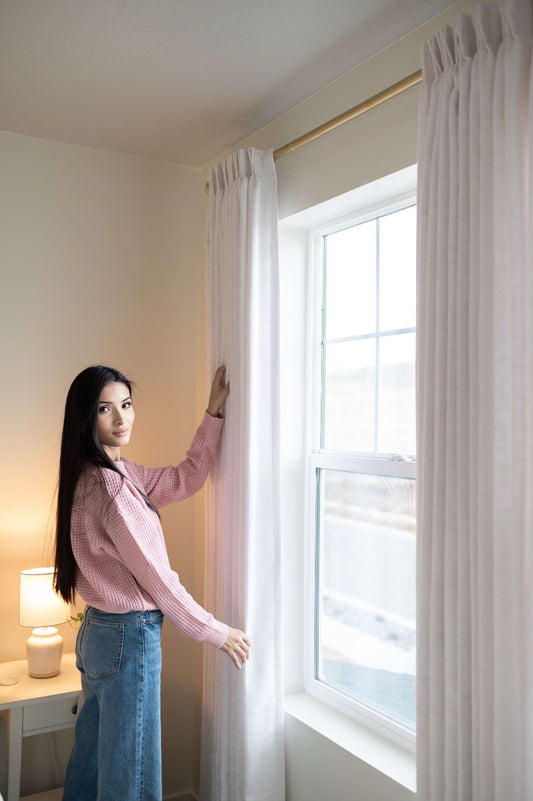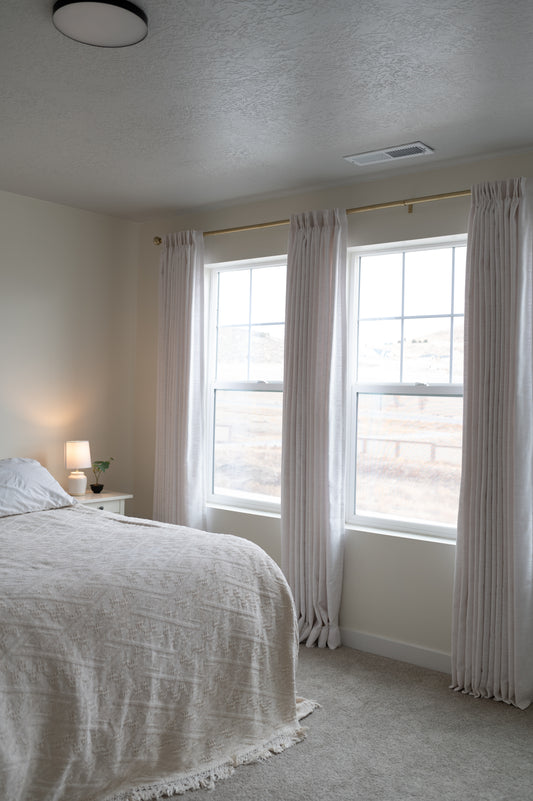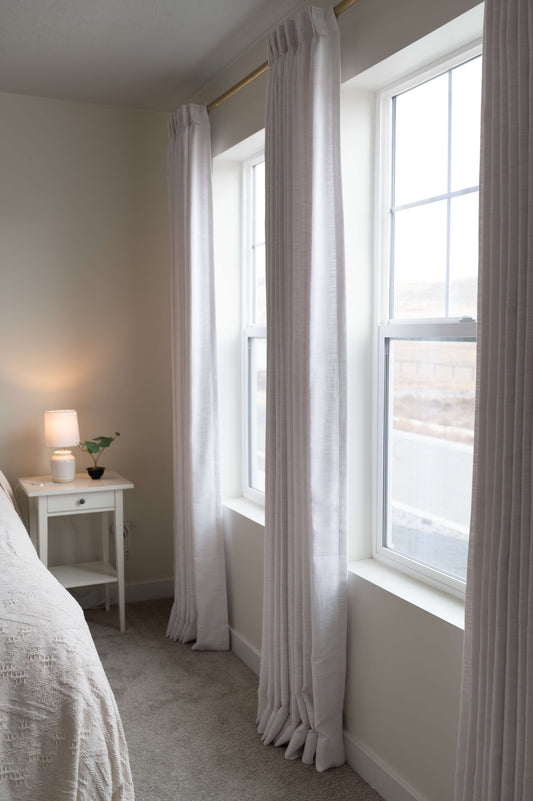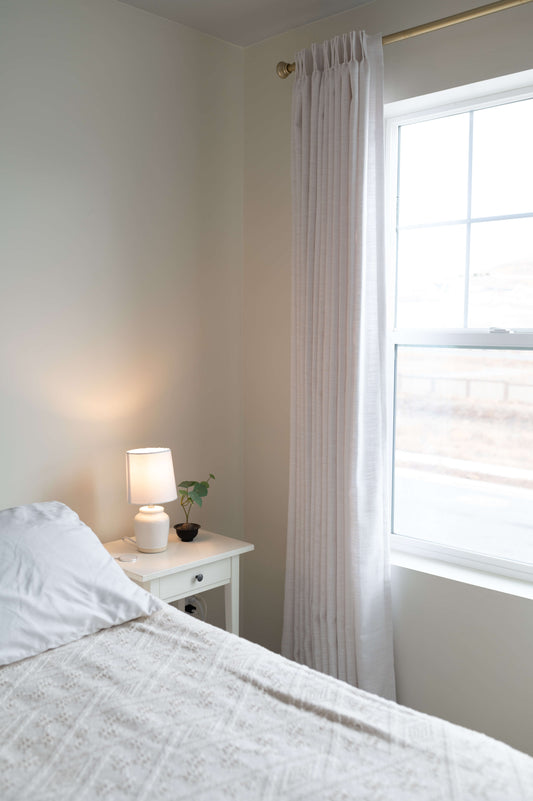Efficient Office Spaces with Smart Window Coverings
Setting the Stage for Sustainable Office Environments
In today’s competitive market, office energy efficiency is more than an environmental responsibility—it is a critical factor for operational cost reduction and improved workplace comfort. Window coverings have emerged as a cornerstone in creating sustainable office spaces, providing a dual benefit of energy savings and enhanced interior ambiance. This article explores the innovative strategies and practical applications of advanced window coverings, offering valuable insights for dealers and distributors seeking to meet the rising demand for energy-efficient office solutions.
As organizations strive to balance aesthetic appeal with functionality, window treatments not only regulate natural light but also influence temperature control, glare reduction, and overall energy consumption. In an era where sustainable practices are increasingly vital, businesses are searching for products that deliver measurable cost savings while supporting environmental stewardship. Our discussion here delves into the technological advances and market opportunities that make modern window coverings indispensable in office energy management.
By understanding the scientific principles behind energy loss through windows, identifying the latest innovations, and implementing smart strategies for distribution, dealers can position themselves as trusted experts in a rapidly evolving market. The following sections break down the essential components, benefits, and forward-thinking approaches that underline the role of window coverings in achieving optimal office energy efficiency.
Window Coverings: An Essential Component in Office Energy Management
The integration of window coverings into office design represents a multifaceted solution that addresses both energy management and employee well-being. Windows, while offering natural light and aesthetic appeal, are also significant contributors to energy loss if not properly managed. Advanced window coverings help mitigate these losses by providing insulation and reducing reliance on artificial heating and cooling systems.
The Science Behind Energy Loss
Heat transfer through windows is a well-documented phenomenon. In winter, unprotected windows can let out valuable heat, whereas in summer, they can allow unwanted warmth to penetrate, increasing the burden on air conditioning systems. Energy-efficient window coverings are engineered to minimize these losses. By controlling solar heat gain and improving insulation, these solutions contribute to a more stable indoor climate, which in turn reduces energy consumption and lowers utility bills.

Multifunctional Benefits
Beyond thermal regulation, modern window coverings offer a range of functionalities:
- Light Management: Precisely control the amount of natural light entering the office, reducing glare and improving visual comfort.
- Privacy and Security: Enhance privacy without compromising on the view or the ambiance of the workspace.
- Aesthetic Versatility: Complement various interior design themes while providing functional benefits.
- Noise Reduction: Some advanced materials also offer sound insulation, contributing to a quieter, more productive environment.
Impact on Workplace Productivity
Employees working in an environment with controlled lighting and temperature levels report higher satisfaction and productivity. As a result, the indirect benefits of installing energy-efficient window coverings can extend to improved employee performance and reduced absenteeism. Dealers and distributors can leverage these performance metrics as key selling points when engaging with office managers and corporate decision-makers.
Innovative Approaches to Enhance Office Energy Performance
With the increasing awareness of sustainability, the office market is witnessing a shift toward integrated energy management solutions. Advanced window coverings are evolving from simple decorative elements to essential components of a broader energy strategy.
Material Innovations and Insulation Technologies
Recent advancements in fabric technology have resulted in window coverings that offer superior thermal insulation without compromising on style. High-performance materials, such as multi-layered textiles and reflective coatings, work together to prevent heat exchange, maintaining a consistent internal temperature. These materials are designed to withstand daily wear while providing long-term durability and energy-saving benefits.

Adaptive Light Control Mechanisms
Technological progress has also led to the development of window coverings with adaptive light control. These systems adjust automatically based on external light conditions, ensuring that the office environment remains comfortable throughout the day. By reducing reliance on artificial lighting during peak daylight hours, businesses can experience significant reductions in electricity consumption.
Customization and Design Flexibility
Modern window treatments offer extensive customization options. From varying opacities to color choices that reflect the brand’s personality, the design flexibility enables a tailored approach to each office environment. Dealers and distributors are well positioned to advise clients on solutions that match both the energy requirements and the aesthetic preferences of their workspace.
Energy Star Certification and Performance Metrics
Window coverings that meet Energy Star guidelines are particularly attractive to offices committed to sustainability. These products have been tested and verified to contribute to energy savings, making them a smart investment. Distributors can use these certifications as a strong selling point, emphasizing the measurable performance improvements and cost benefits of adopting such solutions.
Integrating with Building Automation Systems
One of the most promising trends in modern office design is the integration of window coverings with building automation systems. Automated controls enable real-time adjustments based on sensor data, weather conditions, and occupancy patterns. This integration not only enhances energy efficiency but also provides facility managers with centralized control over the office environment. Dealers should emphasize the ease of integration and the potential for significant energy cost reductions when presenting these products to clients.
Integrating Technology: Smart Window Treatments for Modern Offices
As technology continues to redefine the modern workplace, smart window coverings have become a vital part of office energy strategies. These advanced treatments combine traditional functionality with state-of-the-art automation, offering unprecedented control over indoor environments.

Automation and Sensor Integration
Smart window coverings are equipped with sensors that monitor light levels, temperature, and even occupancy. When integrated with a building’s automation system, these sensors enable the window coverings to adjust automatically, optimizing natural light intake while minimizing energy loss. For instance, during sunny days, the coverings can lower to reduce glare and prevent overheating, then raise when cooler conditions prevail. This dynamic response system ensures that energy consumption is minimized without compromising comfort.
Remote Monitoring and Control
In addition to automated adjustments, smart window treatments offer remote monitoring capabilities. Facility managers can control and schedule window adjustments via dedicated apps or central control systems. This level of control not only improves energy management but also provides a robust platform for maintenance alerts and performance analytics, enabling proactive management of office energy use.
Enhancing User Experience with Smart Features
The user-centric design of smart window coverings extends beyond energy management. Many systems now include features such as programmable settings, integration with voice-controlled assistants, and compatibility with mobile devices. These innovations enhance the overall user experience and promote a sense of modernity within the office space. For distributors, highlighting these user-friendly features can be a compelling argument in favor of adopting smart window treatments.

Case Example: Energy Savings in Action
Consider an office building that recently integrated smart window coverings with its building automation system. Within the first few months, the building reported a noticeable drop in energy bills due to reduced reliance on HVAC systems. The automated adjustments provided a balanced indoor climate, contributing to a comfortable work environment even during extreme weather conditions. Such real-world examples are invaluable for illustrating the tangible benefits of smart window coverings to prospective clients.
The Role of Data in Energy Optimization
Data analytics play a crucial role in the effectiveness of smart window treatments. Continuous monitoring of energy usage patterns allows for the refinement of automated settings over time. By analyzing trends and adjusting algorithms accordingly, facility managers can achieve incremental improvements in energy efficiency. This data-driven approach not only boosts performance but also builds trust with stakeholders by providing clear, quantifiable evidence of cost savings.
Economic and Environmental Benefits of Effective Window Solutions
Investing in advanced window coverings is not only a sustainable choice but also an economically sound decision for office environments. The dual benefits of cost savings and environmental impact make these solutions attractive to modern businesses.
Reducing Operational Costs
One of the most significant benefits of energy-efficient window coverings is the reduction in operational costs. By limiting heat loss and gain, these systems help decrease the demand on heating and cooling systems. Over time, the cumulative savings on energy bills can justify the initial investment in high-quality window treatments. For dealers and distributors, presenting a clear cost-benefit analysis is essential in convincing potential clients of the long-term value of these products.
Enhancing Building Sustainability
Environmental sustainability is a critical consideration for many modern offices. Implementing energy-efficient window coverings contributes directly to a building’s green credentials, which can be a decisive factor in client acquisition and retention. Offices that demonstrate a commitment to sustainability are often favored by environmentally conscious businesses and tenants. Emphasizing the ecological benefits of window coverings—such as reduced carbon emissions and lower energy consumption—can enhance market appeal and foster long-term relationships with clients.
Improving Indoor Environmental Quality
Effective window coverings not only improve energy performance but also enhance the overall indoor environment. By controlling natural light and temperature fluctuations, these treatments create a more stable and comfortable workspace. This improvement in indoor environmental quality can have a positive impact on employee well-being and productivity. Highlighting these benefits in sales presentations can be an effective way to persuade office managers and building owners of the value proposition.

Financial Incentives and Regulatory Compliance
In many regions, businesses are encouraged to adopt energy-efficient technologies through financial incentives, tax credits, and rebates. Energy-efficient window coverings often qualify for these programs, providing additional financial relief. Dealers should be knowledgeable about local regulations and incentives, as this information can be instrumental in closing deals. Clients are more likely to invest in solutions that not only promise energy savings but also offer tangible financial benefits through regulatory support.
Long-Term Investment Value
Beyond immediate savings, energy-efficient window coverings represent a long-term investment in the future of the office environment. With the rising costs of energy and growing concerns about climate change, these solutions are positioned to deliver ongoing benefits for years to come. Distributors can leverage this long-term perspective by emphasizing the durability, performance, and adaptability of modern window treatments in their marketing materials.
Implementation Strategies for Dealers and Distributors
For dealers and distributors aiming to capitalize on the growing demand for energy-efficient office solutions, a well-defined implementation strategy is key. By understanding market trends and customer needs, businesses can effectively promote advanced window coverings as a smart investment.
Market Research and Customer Profiling
Successful implementation begins with thorough market research. Dealers should identify the unique energy challenges faced by modern offices and tailor their offerings to address these specific needs. Customer profiling—understanding the priorities of building managers, facility owners, and decision-makers—is essential for crafting persuasive proposals. Data on energy consumption, seasonal climate variations, and office layout can help in recommending the most appropriate window covering solutions.
Developing Technical Expertise
In a market where technology and sustainability intersect, technical expertise is a significant differentiator. Dealers and distributors should invest in training programs that deepen their understanding of advanced window coverings, automation systems, and energy performance metrics. Being able to clearly explain the benefits and technical details builds trust with clients and positions the distributor as an industry expert. This expertise is crucial in an era where building owners demand not only aesthetic appeal but also measurable performance improvements.
Creating Tailored Sales Presentations
A customized sales presentation that addresses the unique challenges of each client is an effective tool for generating inquiry orders. Presentations should include detailed case studies, cost-benefit analyses, and real-world examples of energy savings. By clearly demonstrating how advanced window coverings can transform office environments, dealers can overcome common objections and build a compelling business case.
Collaborating with Building Automation Providers
Integration is a major trend in modern office environments. Dealers should explore partnerships with providers of building automation systems to offer comprehensive solutions that extend beyond window coverings alone. Such collaborations can lead to bundled offerings that provide enhanced value and improved energy performance. Emphasizing the synergy between smart window treatments and integrated building systems can set distributors apart from competitors.
Digital Marketing and Lead Generation
In the digital age, a strong online presence is indispensable. Dealers must optimize their websites and social media channels to target office managers and corporate buyers. Content marketing strategies, including SEO-friendly blog posts, case studies, and video tutorials, can attract organic traffic and generate high-quality leads. Highlighting success stories and quantifiable energy savings through digital channels builds credibility and encourages potential clients to reach out for further information.

Overcoming Challenges and Addressing Common Concerns
Despite the clear benefits, the adoption of advanced window coverings can raise several concerns among office managers and building owners. Addressing these issues proactively is essential for building trust and driving successful implementation.
Upfront Costs Versus Long-Term Savings
One of the most frequent concerns is the initial investment required for high-performance window coverings. While the upfront costs can be higher than standard solutions, it is important to emphasize the long-term savings in energy bills and maintenance. Detailed financial models that project return on investment (ROI) over a period of years can help clients see the value in making a sustainable investment.
Integration with Existing Infrastructure
Another common concern is how new window coverings will integrate with existing building systems. Modern smart window treatments are designed to work seamlessly with a wide range of building automation platforms. Providing technical documentation and offering installation support can alleviate fears about compatibility and complexity. Dealers should be ready to explain the ease of integration and provide examples of successful installations in similar office environments.
Maintenance and Durability
Clients often worry about the maintenance requirements and durability of advanced window coverings. Highlighting the robustness of contemporary materials, along with warranty programs and maintenance plans, can mitigate these concerns. Demonstrating that these products are built for long-term performance in high-traffic office environments reassures potential buyers of their reliability and value.
Customization and Aesthetic Concerns
While energy efficiency is paramount, the aesthetic aspect of office design cannot be overlooked. Some clients may be hesitant if they feel that energy-efficient window coverings will compromise the look and feel of their workspace. Emphasizing the customization options available—ranging from fabric textures to color schemes—can address these aesthetic concerns. Presenting a portfolio of diverse design solutions reinforces the message that functionality and style can coexist.
Ensuring Measurable Results
Ultimately, decision-makers need to see tangible results to justify their investment. Providing detailed performance metrics, case studies, and testimonials can help overcome skepticism. Dealers who can demonstrate clear evidence of energy savings, improved comfort, and a positive ROI are more likely to secure inquiries and close deals.
Future Trends in Window Covering Innovations for Office Efficiency
The landscape of office energy management is continuously evolving, driven by technological advances and shifting market demands. Looking ahead, several emerging trends are poised to further enhance the role of window coverings in creating sustainable office environments.

Advancements in Smart Fabric Technologies
The future promises even greater innovations in material science. Emerging smart fabrics are expected to offer improved insulation properties while being lighter and more flexible. These fabrics may incorporate nanotechnology and advanced coatings that actively respond to environmental changes. As these innovations become mainstream, the energy performance of window coverings is likely to reach unprecedented levels.
Integration with Internet of Things (IoT)
The ongoing expansion of the Internet of Things (IoT) is set to revolutionize building management systems. Future window coverings will likely be part of a fully interconnected network, where data from various sensors is used to optimize every aspect of indoor climate control. This interconnected approach will enable real-time adjustments that further reduce energy waste and enhance operational efficiency.
Sustainable Manufacturing and Recyclability
As sustainability becomes a critical factor in every aspect of business, manufacturers are exploring eco-friendly production methods and recyclable materials. Window coverings produced with sustainable practices not only reduce environmental impact during their use but also contribute to a circular economy. Dealers who emphasize the sustainable credentials of their products can appeal to eco-conscious clients who value both performance and environmental responsibility.
Enhanced Customization Through Digital Tools
Digital design tools are set to transform the customization process for window coverings. Augmented reality (AR) and virtual reality (VR) applications will allow clients to visualize products in their office space before making a decision. This interactive approach will help bridge the gap between aesthetics and functionality, ensuring that every solution is perfectly tailored to the client’s needs.

Evolving Regulatory Standards
Governments and regulatory bodies around the world are increasingly focusing on energy efficiency standards for commercial buildings. Future regulatory frameworks are likely to impose stricter requirements for energy performance, making advanced window coverings not just an option but a necessity. Dealers and distributors who stay abreast of these regulatory changes and adapt their offerings accordingly will be well-positioned to capture emerging market opportunities.
Key Takeaways and Future Outlook for Office Energy Savings
In summary, advanced window coverings offer a transformative approach to managing office energy efficiency. By addressing the dual challenges of thermal regulation and aesthetic appeal, these solutions empower businesses to reduce operational costs, improve indoor comfort, and contribute to a sustainable future.
The growing sophistication of smart window treatments—characterized by automation, sensor integration, and data analytics—heralds a new era in energy management. For dealers and distributors, the evolving market presents an opportunity to become key players in the distribution of cutting-edge solutions that deliver measurable benefits. With a strong emphasis on customization, technical expertise, and proactive customer engagement, businesses can drive significant energy savings and build long-term, trust-based relationships with their clients.
As the demand for sustainable office environments continues to rise, it is imperative for industry professionals to stay informed about the latest technological advancements and market trends. By positioning advanced window coverings as essential components in energy management, dealers can unlock new revenue streams while contributing to a greener, more efficient future.
Common Inquiries on Office Energy Solutions Through Window Coverings
Q1: What are the primary benefits of installing advanced window coverings in office settings?
A1: Advanced window coverings improve thermal insulation, regulate natural light, reduce glare, and contribute to overall energy savings. They also enhance the aesthetic appeal and comfort of the workspace.
Q2: How do smart window treatments contribute to lowering energy costs?
A2: By integrating sensors and automation, smart window coverings adjust in real time to external conditions, reducing reliance on heating and cooling systems and optimizing energy usage.
Q3: Can these window solutions be integrated with existing building management systems?
A3: Yes, modern smart window coverings are designed for seamless integration with building automation systems, offering remote control, monitoring, and enhanced performance analytics.
Q4: What should dealers emphasize when presenting these solutions to potential office clients?
A4: Dealers should highlight the measurable energy savings, enhanced comfort, customization options, and long-term ROI, along with the environmental benefits of sustainable window coverings.
Q5: Are there any incentives for businesses that install energy-efficient window coverings?
A5: Many regions offer financial incentives, tax credits, or rebates for adopting energy-efficient solutions. Dealers should verify local programs to provide accurate and beneficial information to clients.
